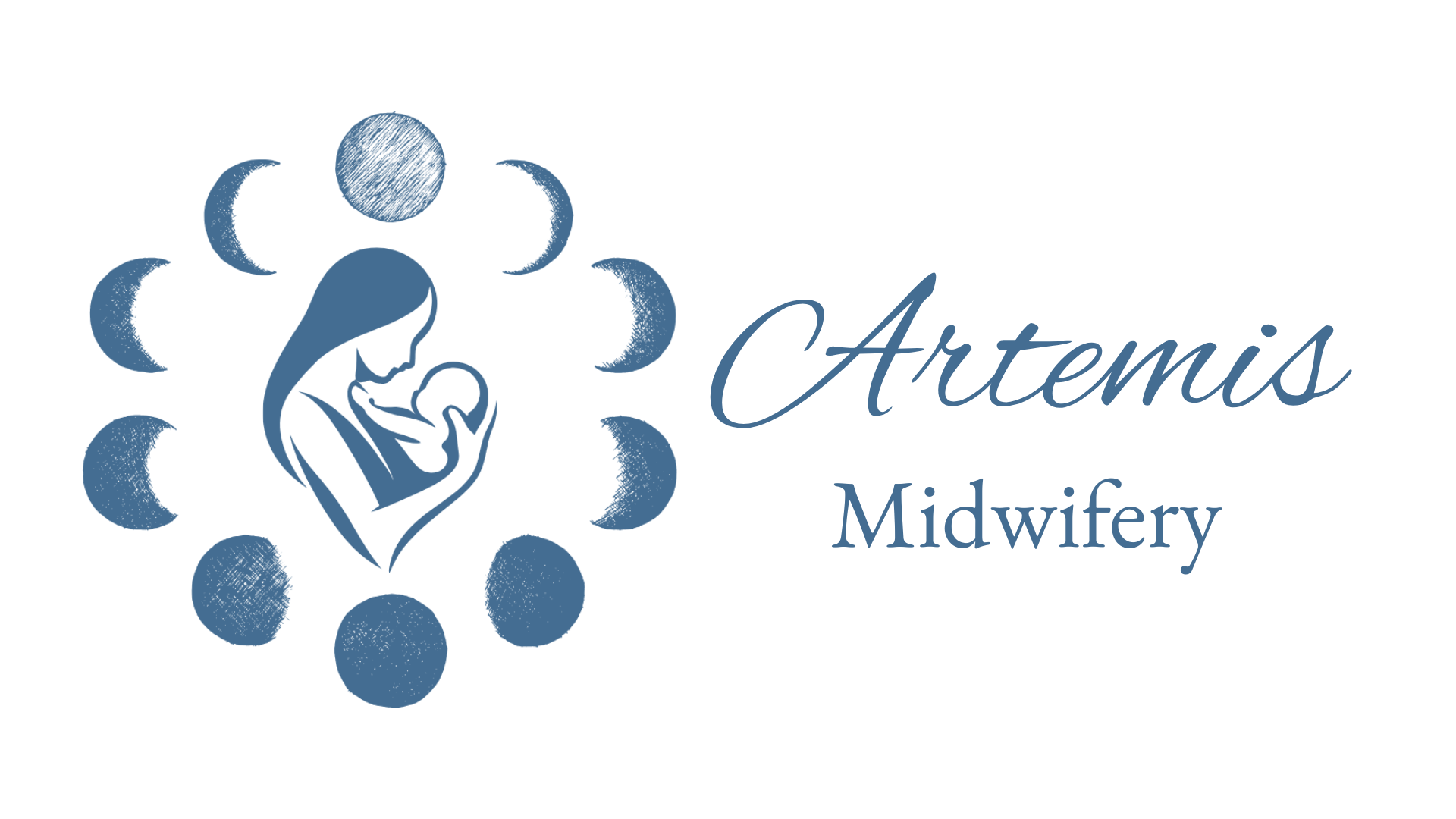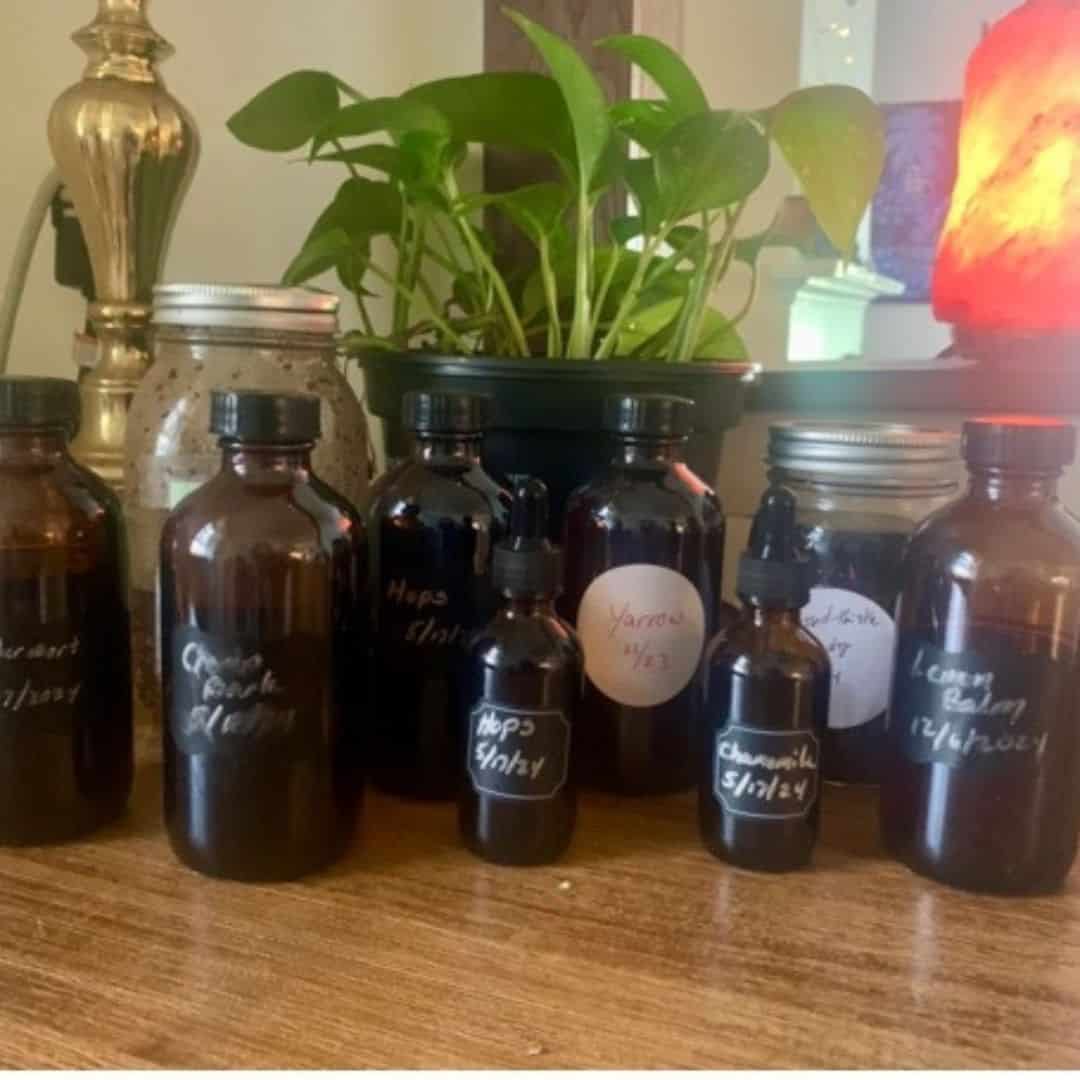Often clients will ask me about the safety and benefits of using herbs in pregnancy.
You may feel drawn to the vitality found in herbal medicine as you go through pregnancy, childbirth, and postpartum. Or you may wish to avoid pharmaceutical preparations for addressing health conditions or common complaints of pregnancy. You may want to choose a modality that supports the body’s own healing process.
Our co-evolution has made plants our companions in the life cycle as they grow from seed to leaf, to flower, then fruit. It’s no wonder we find synergy with the plant world as we join in the process of bringing life.
my personal journey with plants
I remember planting my first garden with my mother guiding me as I carried my third baby still in the womb. The wisdom of generations passed from the hands of mother to daughter as I learned to appreciate the miracle of a seed, the wonder of a sky that was painted new every morning, and the universe of beneficial microbes found in the earth.
As I spent more time starting seeds, weeding, and cultivating I began to deepen my curiosity about plants and their properties. I began growing herbs alongside vegetables; some for culinary use and a few for their healing properties. Later I learned to find and gather, or “wildcraft” some herbs from their native environment.
I started making my own teas and infusions, and from there progressed to encapsulating and tincturing my own remedies. Herbalism is as much about biochemistry as intuition. I feel strongly that remedies prepared by hand carry the intention of the healer. My own practice has been a decade-long pursuit, and the plants continue to instruct, teach, and guide me.
10 herbs to avoid in pregnancy
The power of herbal remedies should not be underestimated. It is best for plant remedies to be used under the guidance of a midwife or other knowledgeable care provider. Most plants are beneficial, but there are a few that should be avoided during pregnancy.
The following list is not exhaustive. If you have questions about the safety or appropriate use of any remedy, please ask your midwife or care provider.
• Barberry
• Black Cohosh
• Cayenne
• Comfrey
• Goldenseal
• Mugwort
• Oregon Grape
• Yarrow
• Licorice
• Motherwort
8 nourishing herbs for pregnancy and beyond
The best place to start with building herbal knowledge is to choose a few plants to get to know well, then gradually add more. Following is a short list of plants that offer health benefits through pregnancy and beyond.
Red Raspberry Leaf (Rubus idaeus)
Red Raspberry Leaf is a mineral-rich herb which is most often recognized as a pregnancy tonic but has hormone-balancing benefits for the entire reproductive cycle from menarche through menopause. It has a high concentration of vitamins and minerals, especially calcium and iron. The herb is used in pregnancy as a uterine tonic which promotes expedient labor with minimal bleeding. Red raspberry is safe for use liberally in pregnancy beginning in second trimester.
Nettle Leaf (Urtica dioica)
Nettle Leaf has long been valued as both a nutrient dense “superfood” and a medicine. It can be eaten as a green, steamed fresh and served with a dash of olive oil and lemon juice, or prepared as a nutritive tea. Nettle is recognized as a remedy for hemorrhaging during childbirth and is used to enrich breastmilk. Nettle leaf is rich in vitamin K, digestible plant iron, calcium, vitamin A, and chlorophyll. Nettle leaf is safe for use liberally during pregnancy.
Lavender (Lavendula officinalis)
Lavender is a beautiful and fragrant herb that is valued as a calming remedy for nerve stress, tension, and relief for mild depression and anxiety. Lavender also has benefits when used externally, and is often found in herbal baths, steams, and massage oils. Lavender is safe for use liberally during pregnancy as a tea, essential oil, or massage oil.
Echinacea (Echinacea spp.)
Echinacea is a well-known herb for strengthening the immune system by building resistance to and reducing the duration of colds, flu, and infections. Echinacea is usually taken as a tincture in quantities of 5 to 29 milliliters. Echinacea is considered a safe herb for preventing infection and illness in pregnancy and during breastfeeding.
Ginger (Zingiber officinale)
Ginger is an excellent warming herb providing circulation through the entire system. Ginger has immune boosting properties and can help fight off a cold. Ginger relaxes smooth muscle, providing aid to menstrual cramps, and also helps to relieve nausea and vomiting of morning sickness as well as digestive bloating and gassiness. Ginger root can be used either fresh or dried. To use just grate the root for use in recipes or as a delicious tea with honey and lemon. Ginger is safe for use liberally during pregnancy.
Chamomile (Matricaria chamomilla)
Chamomile is commonly used for stomach stress, digestive complaints, nervous system disorders, inflammation in the joints, and for wounds. It is especially valuable for problems arising from stress, anxiety, and tension, and can be used as a gentle sleep aid. Chamomile infusions can be enjoyed as a tea and as a soothing bath to relieve tension after a long day. Chamomile is a safe herb for children and can be used to relieve colic and digestive disorders. Chamomile is safe for use liberally during pregnancy.
Oat Straw (Avena sativa)
Oat straw is an herb commonly used for easing the nerves, calming anxiety and promoting relaxation. It is rich in calcium and magnesium and effective for reducing blood pressure. Oat straw tea can reduce skin inflammation and help reduce varicosities by strengthening the capillaries. Oat straw can be enjoyed in a tea or with a soothing bath to relieve tension and tired muscles. Oat straw is safe for use liberally during pregnancy.
Alfalfa (Medicago sativa)
Alfalfa is a pea family plant that is high in chlorophyll and rich in micronutrients. Alfalfa is an excellent source for vitamins A, D, E, and K, eight digestive enzymes, calcium, and numerous trace minerals. Alfalfa leaf infusion can increase Vitamin K and available hemoglobin in the blood, making it an excellent addition to an iron building protocol. Alfalfa infusions can nourish pregnancy, support labor, and support a rich milk supply. Alfalfa is safe for liberal use during pregnancy.
make your own herbal tea
When we prepare an herbal tea, we are drawn into the healing process as our own intention passes through our hands. As we sip, we enjoy the full essence of the plant as we stop for a moment of mindfulness and reflection. Our mind, body, and soul find nourishment.
A standard formula for herbal teas is 1 teaspoon dried herb or 2 tablespoons fresh herb to 1 cup boiling water, usually prepared a quart at a time. However, the preparation is as much about art and intuition as it is science. When working with herbs that are safe and nourishing your sense of taste combined with knowledge about each plant can guide you.
A basic method for preparing tea:
- Place the herb(s) in a container with a tight-fitting lid
- Pour boiling water over the herb(s)
- Steep for 10 to 20 minutes or overnight
- Serve hot or cold and enjoy!
NORA pregnancy tea: a traditional midwife’s brew
NORA is a nourishing tea blend consisting of nettle leaf, oat straw, red raspberry leaf, and alfalfa. It’s a rich herbal combination that is widely recommended by midwives to nourish pregnancy, ease common pregnancy complaints, and prepare for labor, birth and postpartum healing.
NORA tea ingredients:
- 1 cup dry Red Raspberry Leaf
- 1 cup dry Nettles
- ½ cup dry Alfalfa
- ½ cup dry Oat Straw
Mix the dry herbs well and place in an airtight jar
To prepare:
- Place ¼ cup of herb mixture in a quart size canning jar
- Boil 4 cups of water and pour over the herbs in the jar
- Cover the jar with a lid, or small plate to retain the essential oils and let sit overnight
- Strain with a small mesh strainer or cheese cloth
- Drink and enjoy hot or cold.
for more reading about preparing and using herbs
Following is a list of just a few of the books and herbalists who have been guides for me on my own journey to learning about herbs.
Herbal Remedies for Women by Amanda McQuade Crawford
Herbal Healing for Women by Rosemary Gladstar
The Herbal Medicine Maker’s Handbook: A Home Manual by James Green
Herbal Medicine from the Heart of the Earth by Dr. Sherol Marie Tilgner
Botanical Medicine for Women’s Health by Dr. Aviva Jill Romm
Cynthia M. Bean
HOMEBIRTH MIDWIFE
Cynthia (she/her) is a mother, midwife, herbalist, fitness enthusiast, philosopher, seeker, and adventurer. Cynthia has held space for hundreds of families who have found their power and creativity through their birth journey. Cynthia currently owns a home birth midwifery practice near Uxbridge, MA, and in her free time enjoys cycling, hiking, gardening, and traveling to visit her three adult children.

 Let's Chat
Let's Chat
